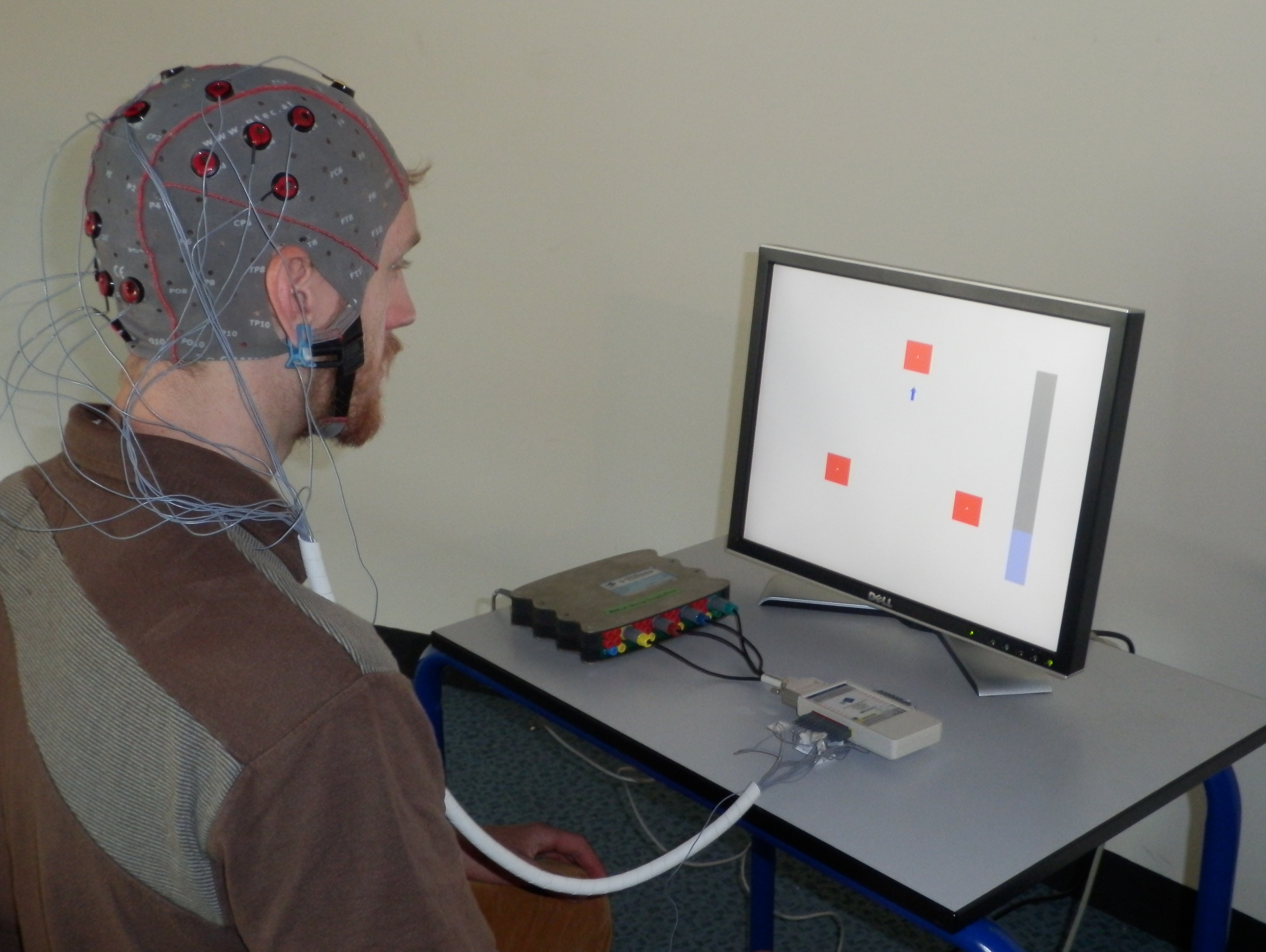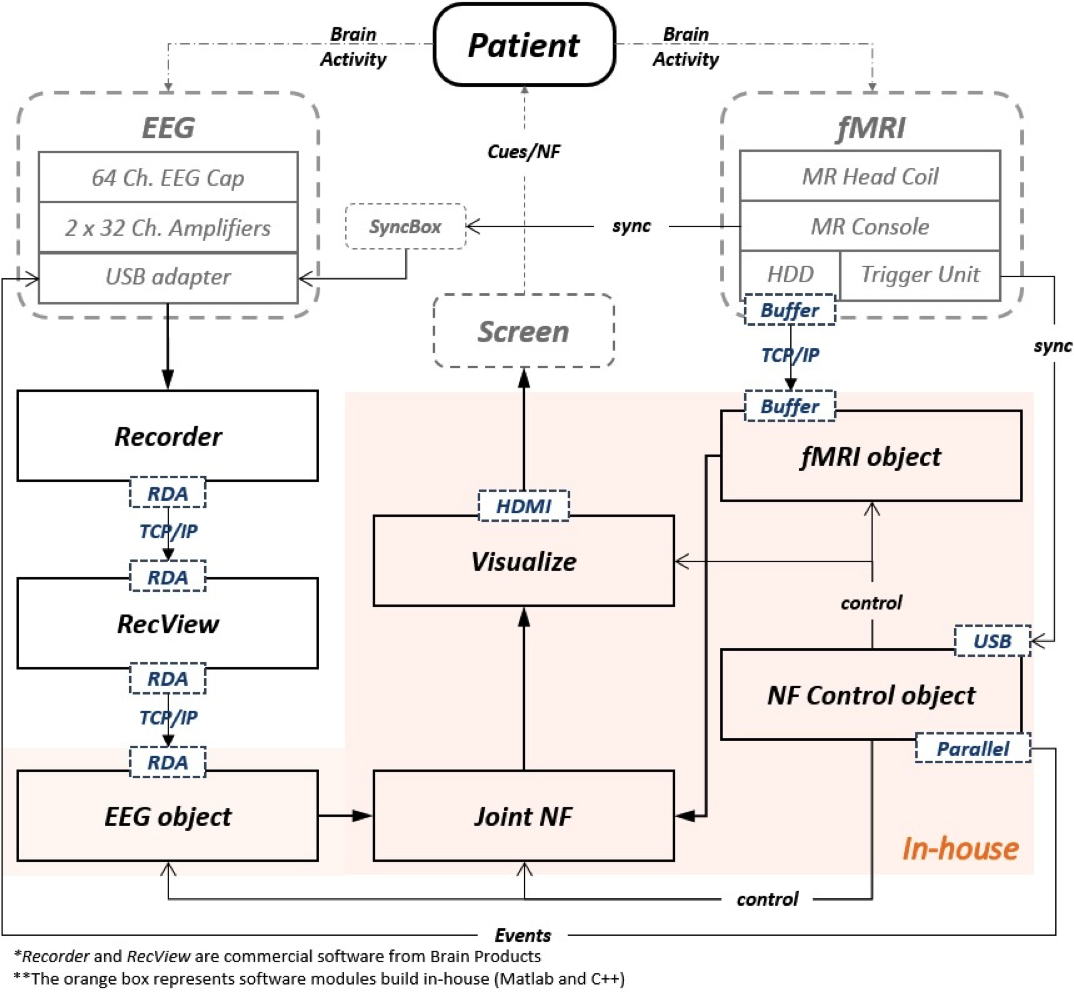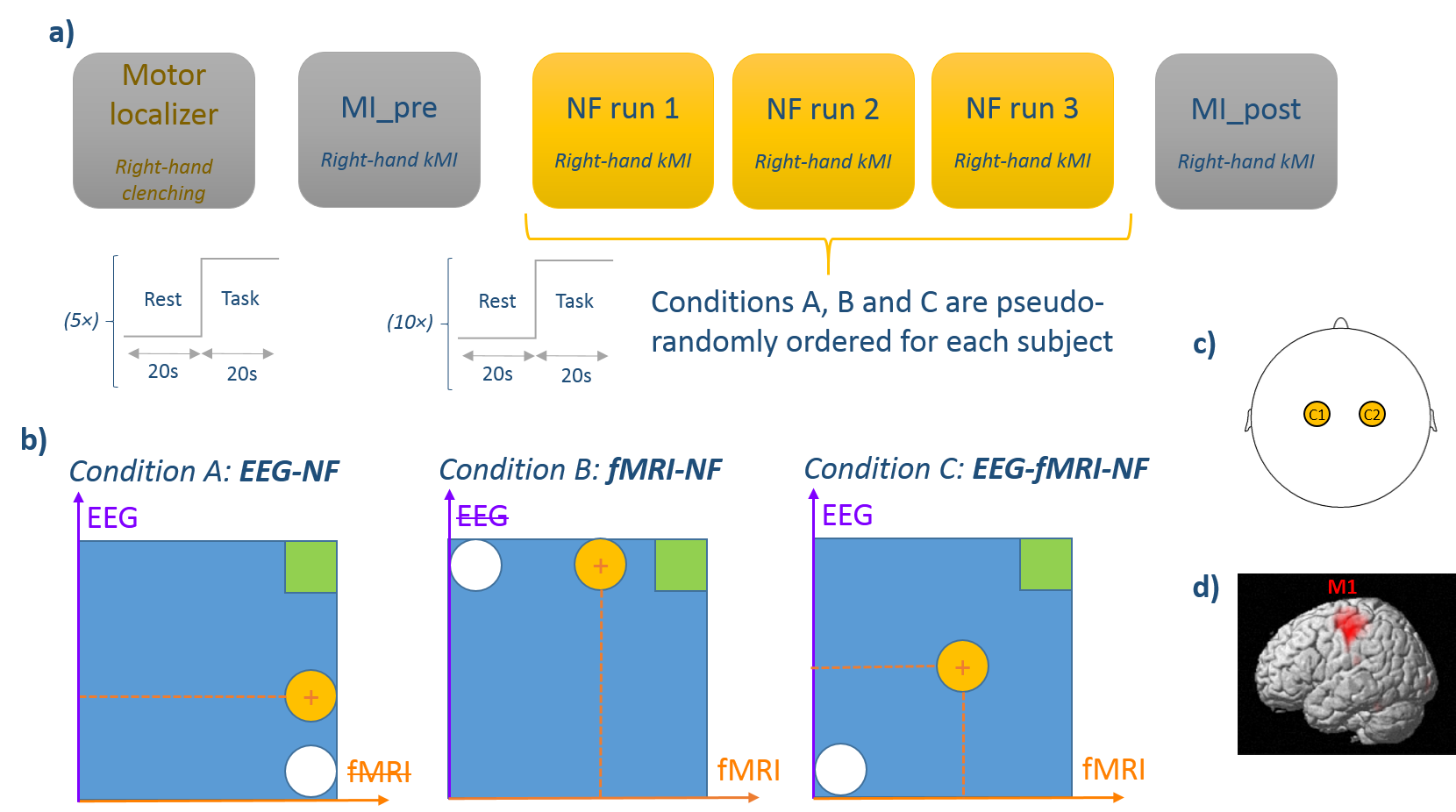Section: New Results
Brain-Computer Interfaces
Contribution to a Reference Book on BCI
We have largely contributed to a reference book on BCI released in 2016 in French and English, and co-edited by Fabien Lotte, Maureen Clerc and Laurent Bougrain for ISTE (French version [36] [37]) and Wiley (English version [39] [40]) publishers. This book provides keys for understanding and designing these multi-disciplinary interfaces, which require many fields of expertise such as neuroscience, statistics, informatics and psychology. This work corresponds to four different book chapters, all published in both French and English, which are presented hereafter.
Book chapter on BCI and videogames
Participants: Anatole Lécuyer
Videos games are often cited as a very promising field of applications for brain-computer interfaces. In a first chapter [30] [31], we described state of the art in the field of video games played "with the mind". In particular, we considered the results of the OpenViBE2 project: one of the most important research projects in this area. We presented a selection of prototypes developed during this OpenViBE2 project which is illustrative of the state of the art in this field and of the use of BCIs in video games, such as based on imagining a motion of the left and right hands to score goals, or in another example using the P300 cerebral potential to destroy spaceships in a remake of well-known Japanese game.
Book chapter on BCI softwares
Participants: Jussi Lindgren and Anatole Lécuyer
In a second chapter [28] [29], we described OpenViBE and other software platforms used to study the subject. The chapter gave an overview of such platforms. We described how the software components of the platforms reflect typical signal acquisition and signal processing stages used in BCI. Finally, we presented a high-level account of differences between major BCI platforms and gave a few pieces of advice and recommendation regarding BCI platform selection.
Book chapter on BCI and HCI
Participants: Andéol Evain, Ferran Argelaguet and Anatole Lécuyer
In a third chapter [34], we focused on the link between BCI and Human-Computer Interaction (HCI), and studied how HCI concepts can apply to BCIs. First, we presented an overview of the main concepts of HCI. We then studied the main characteristics of BCIs related to these concepts. This chapter also discussed the choice of cerebral patterns to use, depending on the interaction task and the use context. Finally, we presented the most promising new interaction paradigms for interaction with BCIs.
This work was done in collaboration with MJOLNIR team.
Book chapter on Neurofeedback
Participants: Lorraine Perronnet and Anatole Lécuyer
We proposed a fourth chapter called Brain training with Neurofeedback [33] [32]. We first defined the concept of neurofeedback (NF) and gave an overall view of the current status in this domain. Then we described the design of a NF training program and the typical course of a NF session, as well as the learning mechanisms underlying NF. We retraced the history of NF, explaining the origin of its questionable reputation and providing a foothold for understanding the diversity of existing approaches. We also discussed how the fields of NF and BCIs might potentially overlap in future with the development of "restorative" BCIs. Finally, we presented a few applications of NF and summarized the state of research of some of its major clinical applications.
This work was done in collaboration with VISAGES team.
BCI Methods and Techniques
Do the Stimuli of a BCI Have to be the Same as the Ones Used for Training it?
Participants: Andéol Evain, Ferran Argelaguet and Anatole Lécuyer
Does the stimulation used during the training on an SSVEP-based BCI have to be similar to that of the end use? We conducted an experiment in which we recorded six-channel EEG data from 12 subjects in various conditions of distance between targets , and of difference in color between targets [10]. Our analysis revealed that the stimulation configuration used for training which leads to the best classification accuracy is not always the one which is closest to the end use configuration. We found that the distance between targets during training is of little influence if the end use targets are close to each other, but that training at far distance can lead to a better accuracy for far distance end use. Additionally, an interaction effect is observed between training and testing color: while training with monochrome targets leads to good performance only when the test context involves monochrome targets as well, a classifier trained on colored targets can be efficient for both colored and monochrome targets. In a nutshell, in the context of SSVEP-based BCI, training using distant targets of different colors seems to lead to the best and more robust performance in all end use contexts.
This work was done in collaboration with MJOLNIR team.
A Novel Fusion Approach Combining Brain and Gaze Inputs for Target Selection
Participants: Andéol Evain, Ferran Argelaguet and Anatole Lécuyer
Gaze-based interfaces and Brain-Computer Interfaces (BCIs) allow for hands-free human-computer interaction. We investigated the combination of gaze and BCIs. We proposed a novel selection technique for 2D target acquisition based on input fusion [9]. This new approach combines the probabilistic models for each input, in order to better estimate the intent of the user. We evaluated its performance against the existing gaze and brain-computer interaction techniques. Twelve participants took part in our study, in which they had to search and select 2D targets with each of the evaluated techniques (see Figure 18). Our fusion-based hybrid interaction technique was found to be more reliable than the previous gaze and BCI hybrid interaction techniques for 10 participants over 12, while being 29% faster on average. However, similarly to what has been observed in hybrid gaze-and-speech interaction, gaze-only interaction technique still provides the best performance. Our results should encourage the use of input fusion, as opposed to sequential interaction, in order to design better hybrid interfaces.
This work was done in collaboration with MJOLNIR team.
|
BCI User Experience and Neurofeedback
Influence of Error Rate on Frustration of BCI Users
Participants: Andéol Evain, Ferran Argelaguet and Anatole Lécuyer
Brain-Computer Interfaces (BCIs) are still much less reliable than other input devices. The error rates of BCIs range from 5% up to 60%. We assessed the subjective frustration, motivation, and fatigue of BCI users, when confronted to different levels of error rate [27]. We conducted a BCI experiment in which the error rate was artificially controlled (see Figure 19). Our results first show that a prolonged use of BCI significantly increases the perceived fatigue, and induces a drop in motivation. We also found that user frustration increases with the error rate of the system but this increase does not seem critical for small differences of error rate. Thus, for future BCIs, we advise to favor user comfort over accuracy when the potential gain of accuracy remains small.
This work was done in collaboration with MJOLNIR team.
|
Design of an Experimental Platform for Hybrid EEG-fMRI Neurofeedback Studies
Participants: Marsel Mano, Lorraine Perronnet and Anatole Lécuyer
During a neurofeedback (NF) experiment one or more brain activity measuring technologies are used to estimate the changes of the acquired neural signals that reflect the changes of the subject's brain activity in real-time. There exist a variety of NF research applications that use only one type of neural signals (i.e. uni-modal) like EEG or fMRI, but there are very few NF researches that use two or more neural signals (i.e. multi-modal). We have developed a hybrid EEG-fMRI platform for bi-modal NF experiments, as part of the project Hemisfer. Our system is based on the integration and the synchronization of an MR-compatible EEG and fMRI acquisition subsystems. The EEG signals are acquired with a 64 channel MR-compatible solution from Brain Products and the MR imaging is performed on a 3T Verio Siemens scanner (VB17) with a 12-ch head coil. We have developed two real-time pipelines for EEG and fMRI that handle all the necessary signal processing, the Joint NF module that calculates and fuses the NF and a visualize module that displays the NF to the subject. The control and the synchronization of both subsystems with each-other and with the experimental protocol is handled by the NF Control. Our platform showed very good real-time performance with various pre-processing, filtering, and NF estimation and visualization methods. The entire fMRI process from acquisition to NF takes always less than 200ms, well below the TR of regular EPI sequences (2s). The same process for EEG, with NF update cycles varying 2-5Hz, is done in virtually real time ( 50Hz).
This work was done in collaboration with VISAGES team and presented as poster at OHBM 2016.
Unimodal versus Bimodal EEG-fMRI Neurofeedback
Participants: Lorraine Perronnet, Anatole Lécuyer and Marsel Mano
In the context of the HEMISFER project, we proposed a simultaneous EEG-fMRI experimental protocol in which 10 healthy participants performed a motor-imagery task in unimodal and bimodal neurofeedback conditions. With this protocol we were able to compare for the first time the effects of unimodal EEG-neurofeedback and fMRI-neurofeedback versus bimodal EEG-fMRI-neurofeedback by looking both at EEG and fMRI activations. We also introduced a new feedback metaphor for bimodal EEG-fMRI-neurofeedback that integrates both EEG and fMRI signal in a single bi-dimensional feedback (a ball moving in 2D). Such a feedback is intended to relieve the cognitive load of the subject by presenting the bimodal neurofeedback task as a single regulation task instead of two. Additionally, this integrated feedback metaphor gives flexibility on defining a bimodal neurofeedback target. Participants were able to regulate activity in their motor regions in all neurofeedback conditions. Moreover, motor activations as revealed by offline fMRI analysis were stronger during EEG-fMRI-neurofeedback than during EEG-neurofeedback. This result suggests that EEG-fMRI-neurofeedback could be more specific or more engaging than EEG-neurofeedback. Our results also suggest that during EEG-fMRI-neurofeedback, participants tended to regulate more the modality that was harder to control. Taken together our results shed light on the specific mechanisms of bimodal EEG-fMRI-neurofeedback and on its added-value as compared to unimodal EEG-neurofeedback and fMRI-neurofeedback.
This work was done in collaboration with VISAGES team and presented as poster at OHBM 2016. Experiments were conducted at NEURINFO platform from University of Rennes 1.





